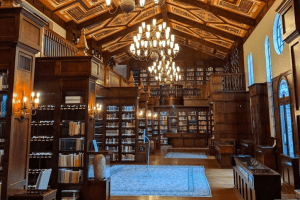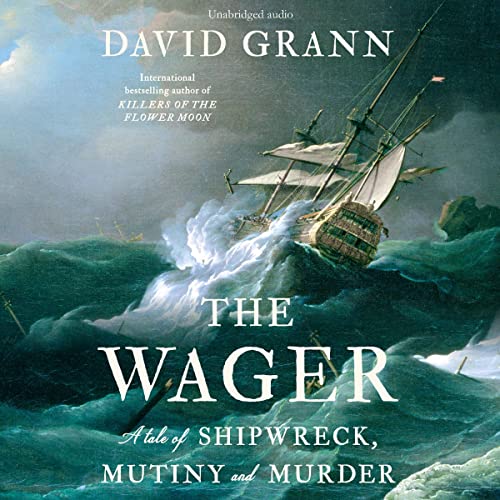The Man Who Gambled Everything on Finding El Dorado: The Wager by David Grann
Introduction: Meet the Author and the Legend of El Dorado
Have you ever wondered what it would be like to embark on a perilous adventure in search of a mythical city of gold? If so, you are not alone. For centuries, explorers, adventurers, and treasure hunters have been fascinated by the legend of El Dorado, a hidden kingdom in South America that was said to be rich beyond imagination.
But what is the origin of this legend, and how did it inspire countless expeditions and wars? And what happened to the brave (or foolish) men who risked their lives and fortunes to find it?
In this article, we will explore these questions and more, as we review the book The Wager by David Grann, a bestselling author and a staff writer at The New Yorker. Grann is known for his meticulous research and his knack for uncovering hidden stories and mysteries. His previous books include The Lost City of Z, which tells the story of a British explorer who vanished in the Amazon while looking for an ancient civilization, and Killers of the Flower Moon, which investigates a series of murders of Osage Indians in Oklahoma in the 1920s.
In The Wager, Grann takes us back to the 18th century, when Britain and Spain were locked in a global war for supremacy and wealth. He tells the story of a British ship, called The Wager, that was part of a fleet sent to attack a Spanish treasure-filled galleon known as “the prize of all the oceans”. The Wager, however, never reached its destination. Instead, it wrecked on a desolate island off the coast of Patagonia, setting off a chain of events that involved shipwreck, mutiny, murder, and a court martial.
Grann draws on historical records, diaries, letters, and testimonies to reconstruct the fate of The Wager and its crew, as well as the impact of their ordeal on history and literature. He also reveals the surprising connection between The Wager and the legend of El Dorado, and how one man’s obsession with finding the golden city led him to gamble everything on a doomed voyage.

The Wager: A Doomed Voyage in Pursuit of Glory and Riches
The Wager was one of the eight ships that formed the Anson expedition, named after its commander, Admiral George Anson. Anson was a naval hero who had a reputation for courage and daring. He was also ambitious and greedy, and he had a grand plan to capture the Spanish galleon that carried millions of pounds worth of gold and silver from the colonies in South America to Spain.
Anson’s plan, however, was plagued by problems from the start. His ships were poorly built and equipped, his crew was inexperienced and sickly, and his departure was delayed by political and logistical issues. By the time he set sail from England in 1740, he had already lost precious time and resources.
The voyage was a nightmare. Anson’s ships faced storms, scurvy, dysentery, and attacks by the Spanish and the French. Many of his men died or deserted along the way. By the time he reached the Pacific Ocean, he had only three ships left: The Centurion, The Gloucester, and The Wager.
The Wager was the weakest and the slowest of the three. It was a former merchant ship that had been converted into a warship, but it was still unfit for combat. It was also overcrowded, carrying more than 300 men, including soldiers, sailors, officers, and passengers. Among them was John Byron, a young aristocrat who had joined the navy as a midshipman. Byron was the grandson of the poet John Wilmot, the Earl of Rochester, and he had a flair for writing and adventure. He kept a journal of his experiences on board The Wager, which would later become a valuable source of information for historians and writers.
The Wager’s captain was David Cheap, a veteran sailor who had a temper and a drinking problem. He often clashed with his officers and his crew, especially with the gunner, John Bulkeley, who was a leader among the lower ranks. Bulkeley was a cunning and charismatic man, who had a secret agenda of his own. He had heard rumors of El Dorado, the golden city that was supposed to be somewhere in South America, and he had a map that claimed to show its location. He was determined to find it, even if it meant betraying his captain and his country.
The Wager’s fate was sealed on May 14, 1741, when a violent storm separated it from the rest of the fleet. The ship was battered by the wind and the waves, and it drifted southward, away from its intended course. On May 24, it crashed into a rocky shore near a barren island, later named Wager Island, in the Strait of Magellan. The ship was wrecked beyond repair, and most of its provisions and supplies were lost or damaged. The survivors, about 140 men, managed to reach the shore, but they soon realized that they were stranded in a hostile and inhospitable land, with little hope of rescue or escape.
The Raft: A Desperate Journey Across the Stormy Seas
The Wager’s crew faced a dilemma: should they stay on the island and wait for help, or should they try to reach the nearest civilization, which was thousands of miles away? Captain Cheap wanted to stay, hoping that Anson or another British ship would find them. He also feared that leaving the island would expose them to the Spanish, who controlled most of South America and who would treat them as enemies and prisoners.
Bulkeley, however, wanted to leave, arguing that staying on the island would mean certain death by starvation, disease, or cold. He also saw an opportunity to pursue his dream of finding El Dorado, and he convinced many of his fellow sailors to join him. He proposed to build a raft from the remains of The Wager, and to sail across the Pacific Ocean to Chile, where they could find friendly natives or sympathetic colonists who would help them.
The conflict between Cheap and Bulkeley soon escalated into a mutiny. On October 14, 1741, Bulkeley and his followers seized the raft and the remaining provisions, and set sail from the island, leaving Cheap and about 80 men behind. Among those who stayed with Cheap was Byron, who remained loyal to his captain and his duty.
The raft was a flimsy and dangerous contraption, barely able to float or steer. It carried 81 men, crammed together in a space of about 20 feet by 15 feet. They had no shelter, no compass, no map, and no instruments. They had only a few barrels of water, some biscuits, and some salted meat. They also had a few guns and swords, which they would need to defend themselves from the Spanish, the natives, or each other.
The journey was a nightmare. The raft faced storms, currents, and leaks, and it often drifted off course. The men faced hunger, thirst, and disease, and they often fought among themselves. Many of them died or went mad along the way. Bulkeley, however, kept his spirits and his authority, using his charisma and his cunning to maintain order and morale. He also kept his map and his vision of El Dorado, which he used to motivate and manipulate his men.
After nearly four months of sailing, the raft finally reached the coast of Chile, near the city of Valdivia, on February 9, 1742. The survivors, about 50 men, were overjoyed to see land and people, but they soon realized that they had landed in enemy territory. They were captured by the Spanish, who treated them as pirates and spies. They were interrogated, tortured, and imprisoned, and they faced the possibility of execution or slavery.
The Trial: A Clash of Testimonies and a Verdict of Treason
Meanwhile, on Wager Island, Cheap and his men faced their own ordeal. They had to endure the harsh winter, the lack of food and water, and the attacks by the natives, who were hostile and violent. They also had to deal with the resentment and the rebellion of some of their men, who blamed Cheap for their misfortune and who wanted to join Bulkeley and his raft.
Cheap, however, refused to give up. He was determined to survive and to return to England, where he hoped to clear his name and to punish Bulkeley and his mutineers. He also had a loyal ally in Byron, who supported him and who documented their struggles and their achievements. Byron also showed a remarkable curiosity and a sense of wonder, as he observed and described the flora, the fauna, and the culture of the island and its inhabitants.












